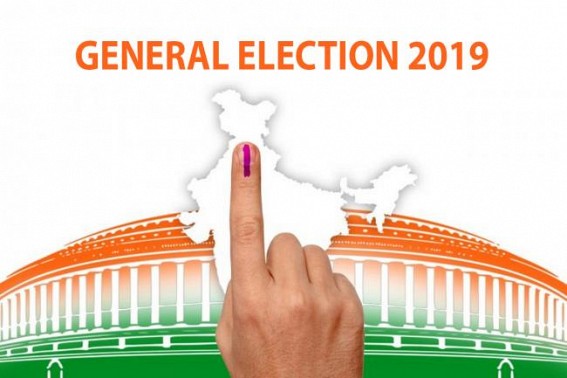Chronic political violence in West Bengal paints democracy in blood with Phase 6 of Lok Sabha polls a case in point
TIWN
New Delhi, May 13 (TIWN): The street in Kolkata where my parents' house is located is often witness to scuffles. Not among regular passersby, but members of rival parties. Something as minor as two opposing party workers bumping into each other could set off fisticuffs among them, reflecting what the politics in West Bengal is like.
In Phase 6 of the parliamentary election on n Sunday, only eight of the 42 Lok Sabha constituencies in West Bengal went to polls, but it was the bloodiest round this election, so far. A day before the polls, a BJP booth president was hacked to death, and the body of a Trinamool Congress worker reported missing a day earlier was found. This set off further violence across the state, with reports of firing at Sabang, which falls under the Medinipur constituency, Moina under Tamluk, Keshpur under Ghatal, Gopiballavpur under Jhargram and Kalabagan under the Bishnupur seat.
Incidentally, these are the constituencies where the BJP has gained ground and has the possibility of putting up a strong contest for the TMC.
The 'highlight' of the day was the clashes between locals and the security of BJP candidate Bharati Ghosh's convoy in Ghatal's Keshpur. The tussle escalated, and Central forces were forced to open fire, lob teargas shells and lathicharge the disruptive mob.
Elections or not, violence among workers of political parties is common in West Bengal. Looking at the history of the political violence in the state, no amount of deployment of Central forces can entirely contain such attempts at show of strength.
As Firstpost noted in this article, political violence in West Bengal has historical roots, which date back to peasant movements against Congress-backed landlords that ultimately helped the Communist Party of India (Marxist) sow its seeds in the state. In 1972, the Congress was accused of rigging the Assembly elections using the state machinery to target the Opposition, a charge that every subsequent government in West Bengal has faced.
The political structure in West Bengal is different from that in other states, which helps understand why the state is plagued by political violence. Here, panchayats are a powerful tool to implement party/state policy at the ground level, which ultimately shapes the politics of West Bengal. This makes it vital for political parties to hold territorial control of the state's villages, and the violent politics of West Bengal can partly be attributed to this fight for control.
The run-up to the panchayat elections in 2018 €" marred by similar incidents of clashes among party works €" explains the importance of the panchayati raj system in West Bengal and is a clear indication that politics in West Bengal goes hand in hand with the need to establish power by hook or crook.
In the current political scenario, it's the Trinamool Congress attempting to assert its clout in its home state over the BJP, which has been trying to make inroads in the eastern state by taking on Chief Minister Mamata Banerjee's party. There have been accusations galore from the two sides, with each blaming the other for instigating violence in the state. The TMC has accused the BJP of fomenting religious trouble €" the reason it stated for blocking the party's rath yatra in Bengal earlier this year. During the polls, the party claimed that the saffron unit was using the Central forces available at its disposal as the ruling party at the Centre to swing votes in its favour.




